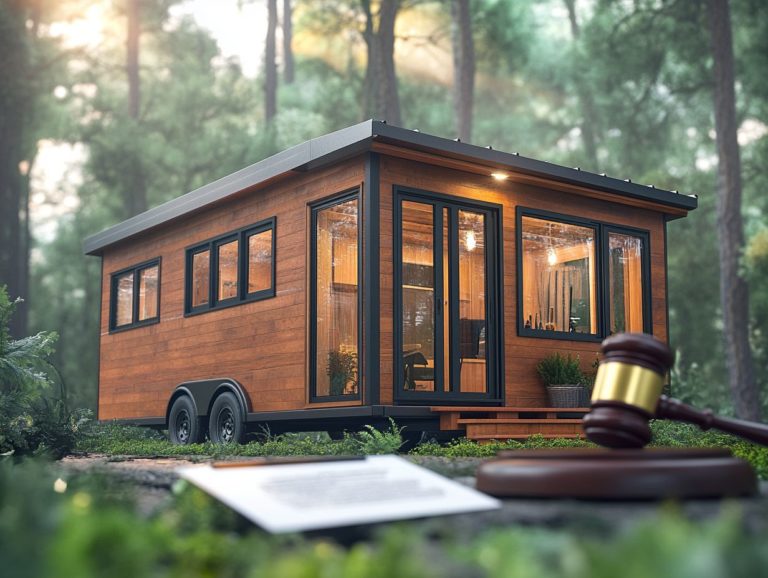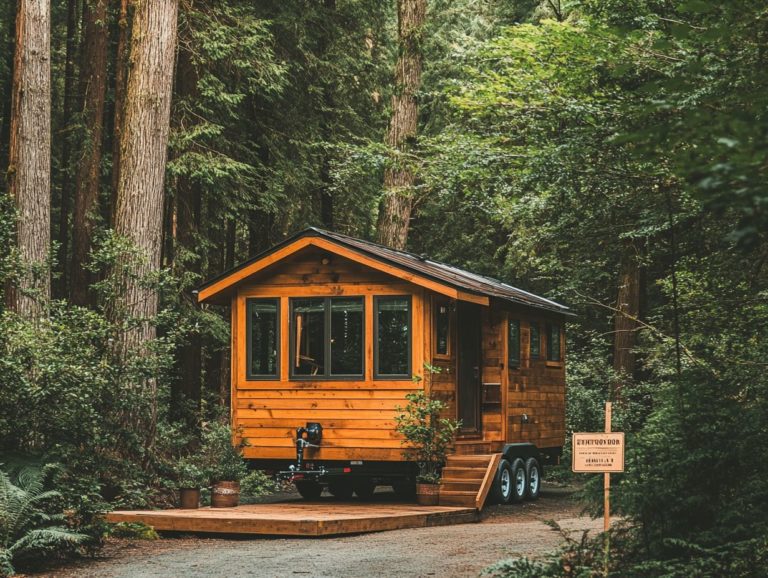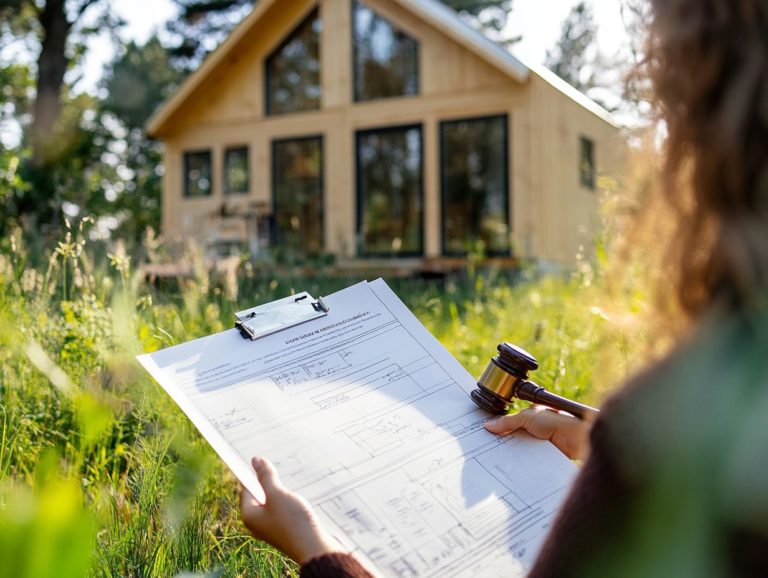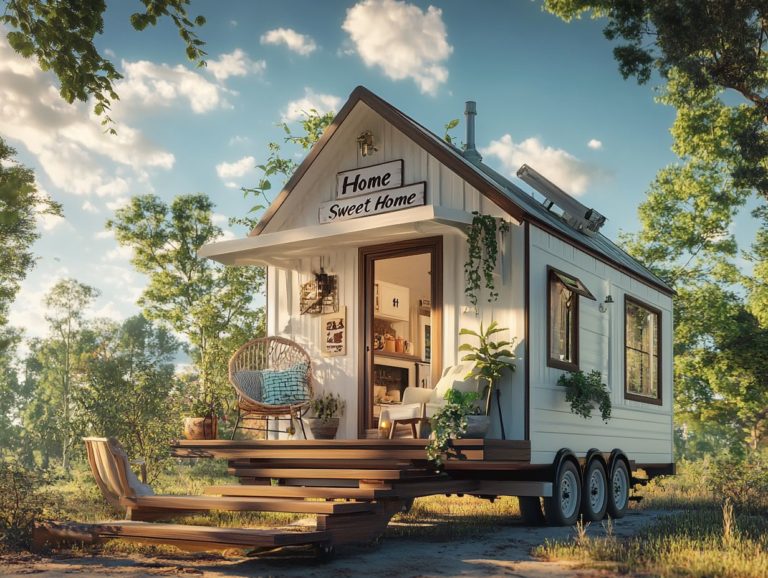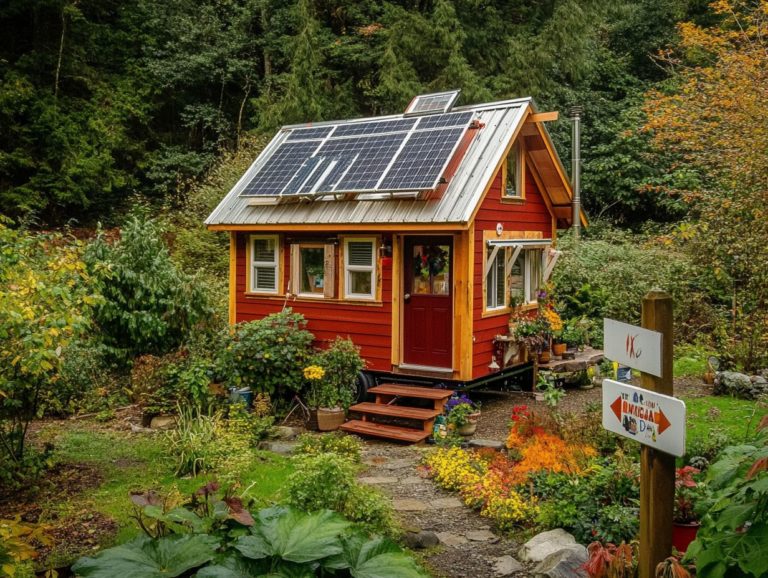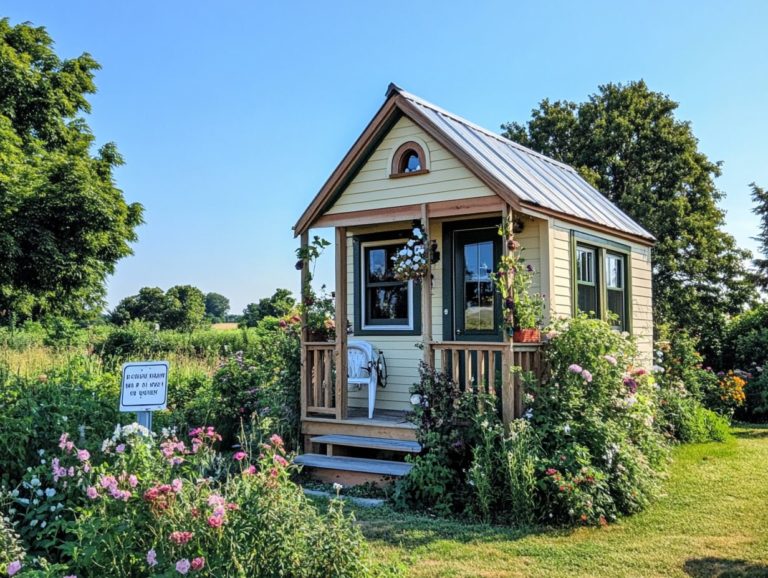Navigating Tiny House Laws in Your Area
Tiny houses are more than just a fleeting trend; they embody a lifestyle choice that champions minimalism, sustainability, and affordability.
As you prepare to embark on your tiny living journey, it s crucial to understand the legal landscape surrounding these compact homes, including tiny house laws and zoning regulations.
This article clarifies what defines a tiny house and outlines the current laws and regulations you should be aware of. We will guide you through navigating zoning laws in your area.
We will also explore building codes, permits, and alternative small living solutions. This ensures you are thoroughly prepared for life in a tiny home.
You will find practical tips to maximize your space and resources. Use energy-efficient systems to transform your tiny house into a cozy sanctuary that reflects your lifestyle.
Contents [hide]
- Key Takeaways:
- Understanding Tiny Houses
- Current Laws and Regulations for Tiny Houses
- Navigating Zoning Laws
- Building Codes and Permits for Tiny Houses
- Alternative Living Solutions
- Tips for Successfully Living in a Tiny House
- Frequently Asked Questions
- What are the first steps I should take when navigating tiny house laws in my area?
- Can I legally live in a tiny house in my area?
- Do I need a building permit to build a tiny house?
- Are there restrictions on the size and design of a tiny house in my area?
- Can I park my tiny house on any property?
- Are there any resources available to help me navigate tiny house laws in my area?
Key Takeaways:
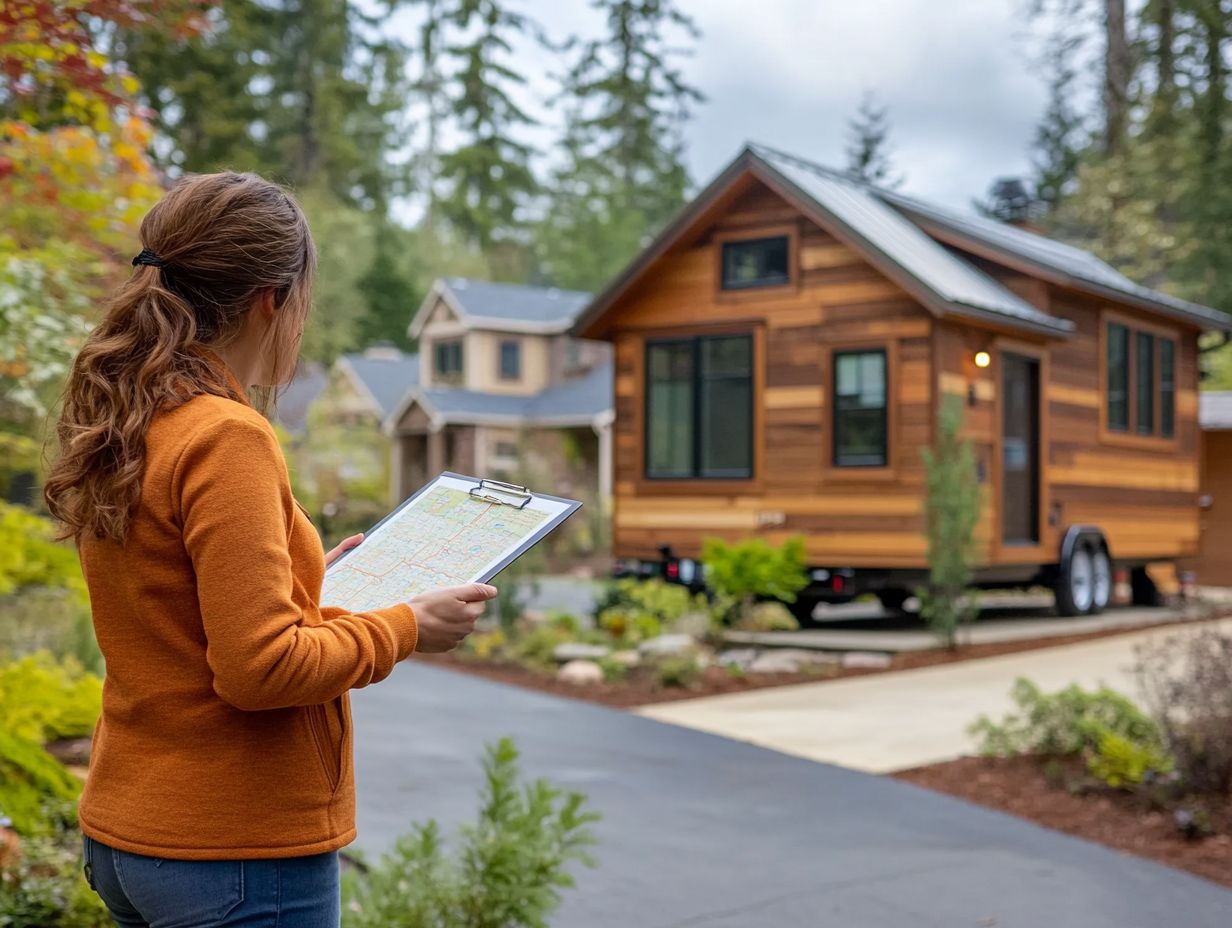
- Understand the definition of a tiny house and the laws in your area before pursuing this living option.
- Navigating zoning laws can be tricky. Research your area s regulations to find the right spot for your tiny house.
- Building codes and permits are essential for safety and legality. Research the requirements before beginning construction.
Understanding Tiny Houses
Understanding tiny houses is crucial for anyone exploring sustainable and affordable housing options today. These compact living spaces, often called small additional homes or granny flats, are popular for their versatility and efficiency.
You can find tiny houses in urban centers and rural landscapes, often within dedicated tiny house communities. As the housing shortage continues, individuals and families increasingly choose tiny homes for their financial benefits and the sense of community they offer.
What is a Tiny House?
A tiny house is your chance to embrace independent living, usually measuring under 400 square feet. Each tiny house is designed for efficient use of limited space.
These innovative homes come in various forms, from mobile units on trailers to stationary houses. Each one showcases creative designs that maximize every square foot.
Tiny houses are increasingly viewed as a solution to the affordable housing crisis. They provide a cost-effective path to homeownership for those eager to invest in their future.
Living in a streamlined environment promotes a minimalist lifestyle, sustainability, and a deeper connection to your surroundings. This lifestyle fosters a sense of community with others who share similar values.
Current Laws and Regulations for Tiny Houses
Laws and regulations governing tiny houses differ significantly from state to municipality. This patchwork of rules affects their legality, construction, and occupancy.
National and Local Regulations
National and local regulations shape the construction and placement of tiny houses. These rules vary by region, presenting a spectrum of flexibility and requirements.
While national codes establish fundamental safety and structural standards, local jurisdictions enforce zoning laws that dictate where you can park your tiny home. These regulations can heavily influence your tiny home development journey.
In some areas, restrictions may limit tiny houses to specific zones or mandate adherence to standard residential building codes. Conversely, other locations may embrace innovative living solutions, offering fewer hurdles to overcome.
Community development financial institutions are essential allies in advancing tiny housing initiatives. They provide necessary funding and resources, helping you navigate the complex landscape of legislation.
Navigating Zoning Laws
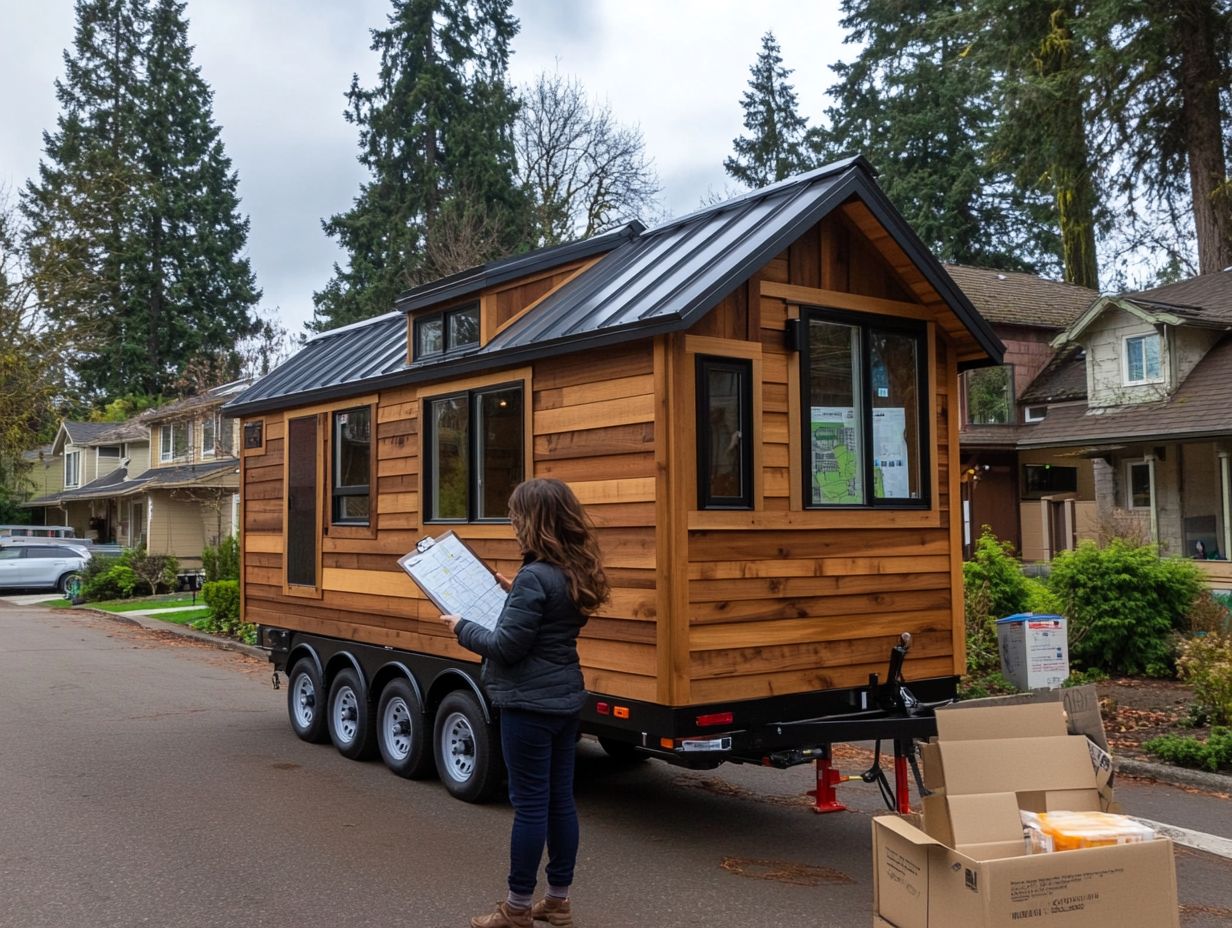
Navigating zoning laws is essential for you as a property owner or potential tiny house resident. These regulations determine where tiny homes can be situated and the conditions for placing them.
Understanding this landscape, including the outcomes of legislative sessions, is key to ensuring that your tiny house aspirations align with legal requirements.
How to Find Zoning Information for Your Area
Finding zoning information is vital for following local rules when considering building a tiny house. It serves as the foundation for making informed decisions and avoiding potential legal complications.
Start by visiting your local government s website; you ll typically find zoning maps and property use regulations there.
Community meetings provide valuable insights and give you a chance to ask specific questions about tiny house placements. Engaging in these discussions helps you connect with local officials and meet neighbors who may share your interests!
Advocacy organizations offer resources designed to help you navigate housing policies, making them invaluable allies in understanding the nuances of zoning codes that could affect your tiny house plans. For more information, explore tiny house living and the importance of zoning.
Building Codes and Permits for Tiny Houses
Building codes and permits for tiny houses ensure safety and compliance throughout the construction process. Requirements can vary significantly based on your location and the type of construction you choose.
Understanding these regulations is crucial for a successful project.
Requirements and Process for Obtaining Permits
The journey to obtaining permits for building a tiny house involves navigating a series of meticulous steps to adhere to local housing policies and building codes.
It starts with examining zoning regulations, which dictate where you can legally place such structures. For a deeper insight, understanding tiny house zoning laws is crucial. You’ll need to prepare and submit a comprehensive set of drawings and plans that meet specific guidelines, covering aspects like structural integrity and environmental impact.
Documents such as site plans and engineering reports will typically be on your checklist. Stay informed about the associated fees, as these can vary significantly based on your location.
You might encounter challenges like navigating bureaucratic red tape and addressing neighbor objections. However, you can overcome these hurdles by engaging with local officials early on and building positive relationships within your community!
Alternative Living Solutions
Alternative living solutions like tiny homes and accessory dwelling units provide practical answers to the pressing challenges of housing affordability and the growing demand for flexible living arrangements.
Other Options for Small Living Spaces
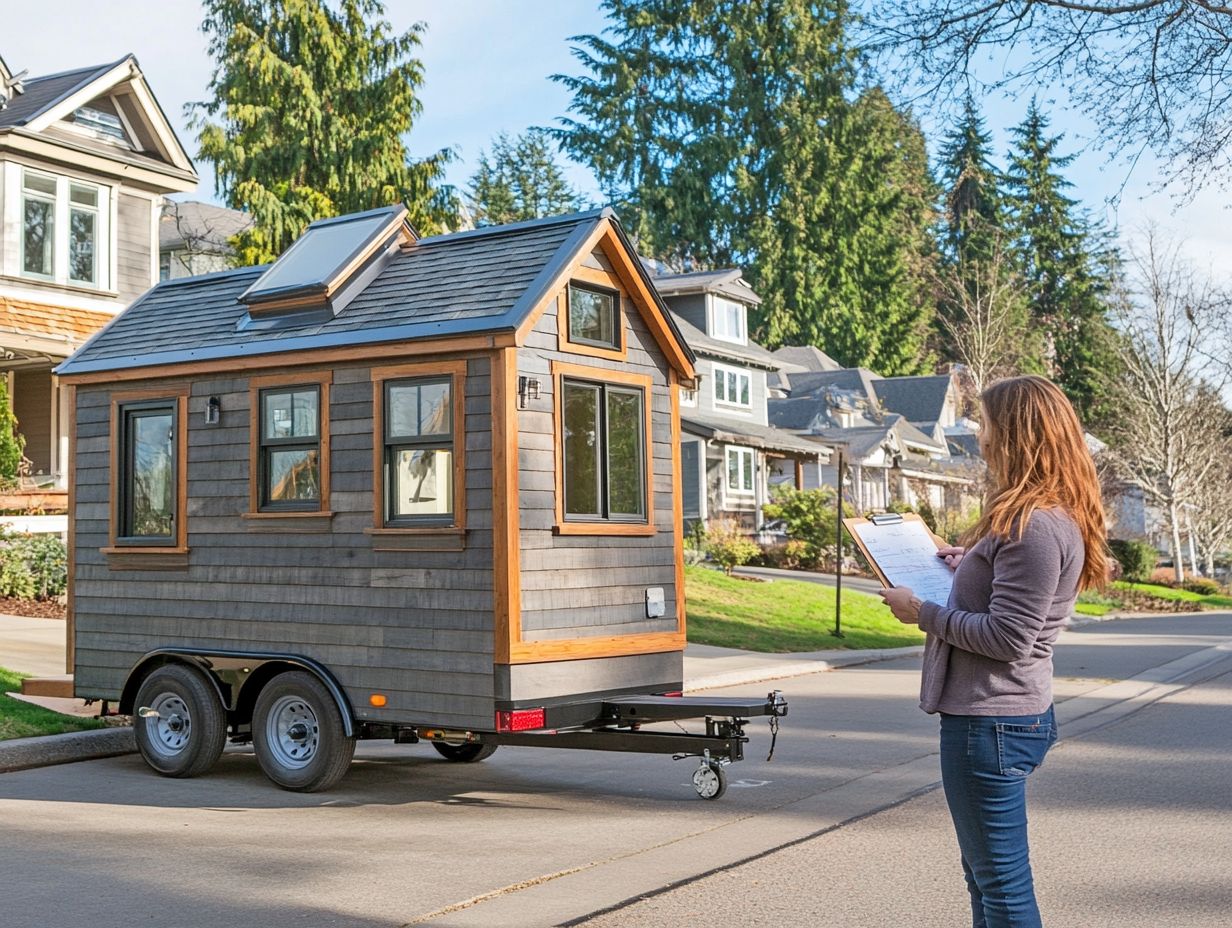
Along with traditional tiny homes, you ll find various options for small living spaces, such as mobile tiny homes and foundation tiny homes.
These compact housing solutions have numerous advantages, from reducing your monthly expenses to embracing a minimalist lifestyle. Unique options like container homes or converted RVs allow you to pursue a nomadic existence while enjoying the comforts of home.
This adaptability not only lets you travel but also accommodates shifting family needs, making these options a smart choice for diverse living arrangements!
Small living spaces significantly contribute to sustainability efforts, helping you reduce your environmental footprint. This approach resonates with a growing audience eager to embrace eco-friendly living.
Tips for Successfully Living in a Tiny House
Successfully residing in a tiny house demands meticulous planning and astute resource management. By organizing your limited space thoughtfully, you can enhance both functionality and comfort in your new living environment!
Maximizing Space and Resources
Maximizing space and resources in a tiny house is crucial for crafting a functional and enjoyable living environment that fully embraces minimalism.
This approach not only makes you feel more comfortable but also nurtures a sense of peace and order. By organizing your belongings efficiently, you ensure that everything has its rightful place, significantly reducing the clutter that can easily overwhelm small spaces.
Consider utilizing vertical space. Imagine shelving units that stretch to the ceiling or hooks for your most-used items. Incorporating sustainable materials into your design showcases your commitment to the environment and adds unique aesthetic appeal, enriching your overall living experience.
Thoughtful design is key in transforming tiny living from a challenge into a truly satisfying lifestyle.
Frequently Asked Questions
Here are some common questions about tiny houses.
What are the first steps I should take when navigating tiny house laws in my area?
The first step is to research and familiarize yourself with the local rules about where and how you can build. This will give you a better understanding of what is allowed and what is not when it comes to tiny houses.
Can I legally live in a tiny house in my area?
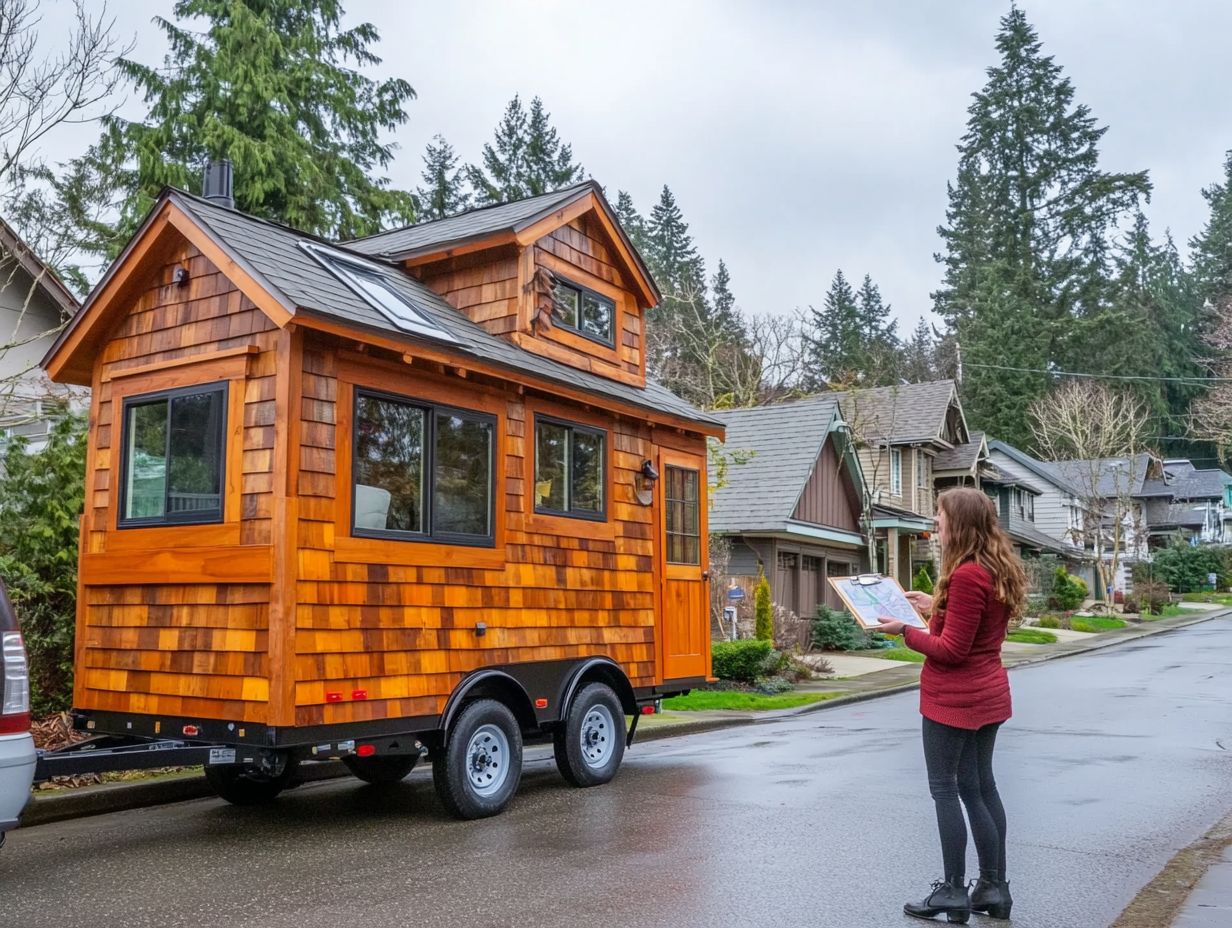
The answer to this question will depend on the specific laws and regulations in your area. Some places may allow tiny houses as permanent residences, while others may only allow them as temporary structures or on designated properties.
Do I need a building permit to build a tiny house?
In most areas, building a tiny house will require a building permit. Don t miss checking with your local building department to determine what permits and approvals are needed before starting your project.
Are there restrictions on the size and design of a tiny house in my area?
Yes, many areas have specific regulations on the size, height, and design of tiny houses. Some may also have requirements for utilities and connections to the main grid.
Can I park my tiny house on any property?
No, it’s important to check with local zoning laws and property owners before parking your tiny house on a property. Some areas may require a specific type of property or may have restrictions on where a tiny house can be parked.
Are there any resources available to help me navigate tiny house laws in my area?
Yes, there are several organizations and websites that provide information and resources for navigating tiny house laws in different areas. It s also helpful to reach out to local builders and tiny house communities for their insights and experiences.
For more information or to share your own experiences, feel free to explore additional resources or reach out to the tiny house community!

